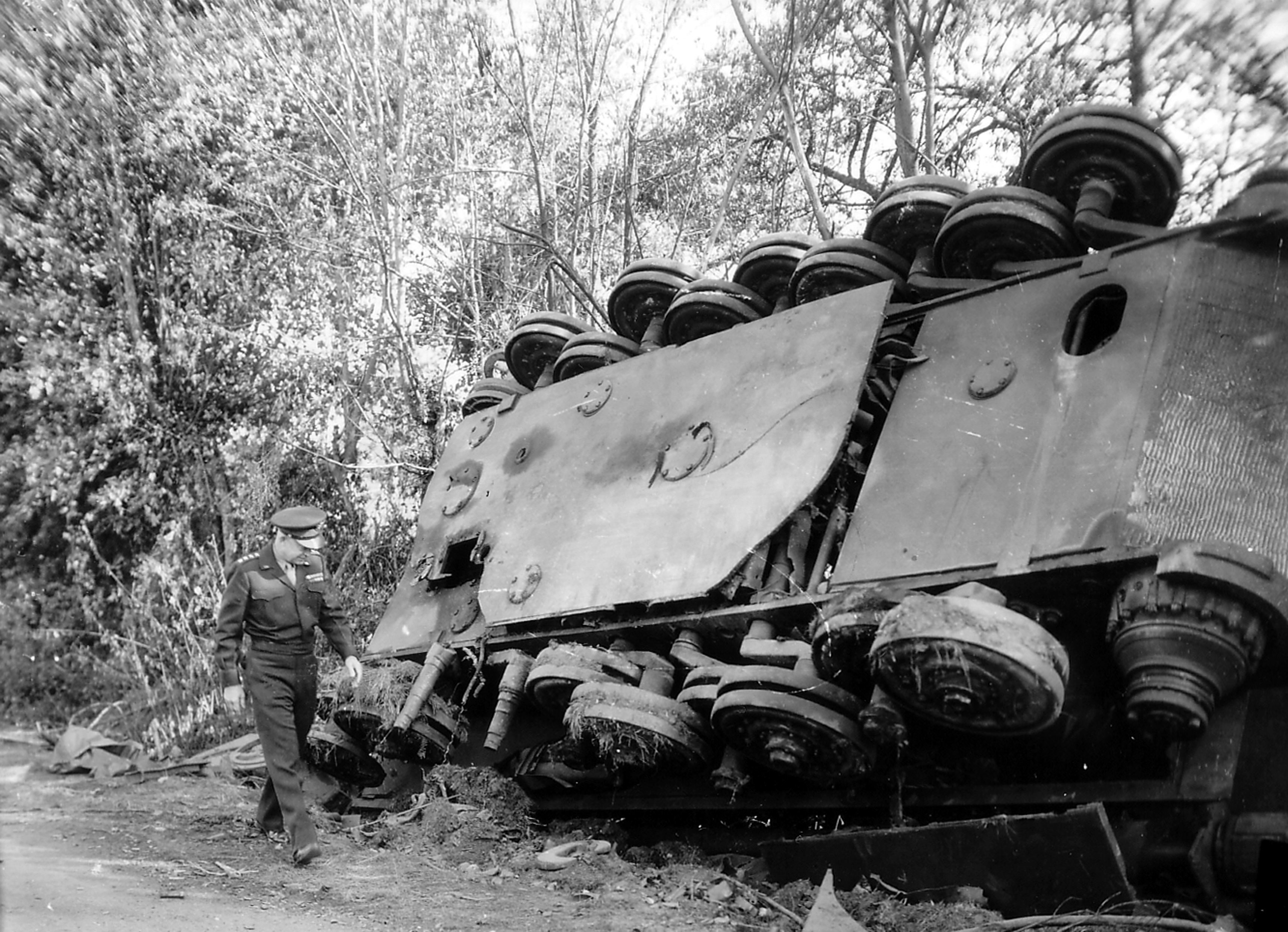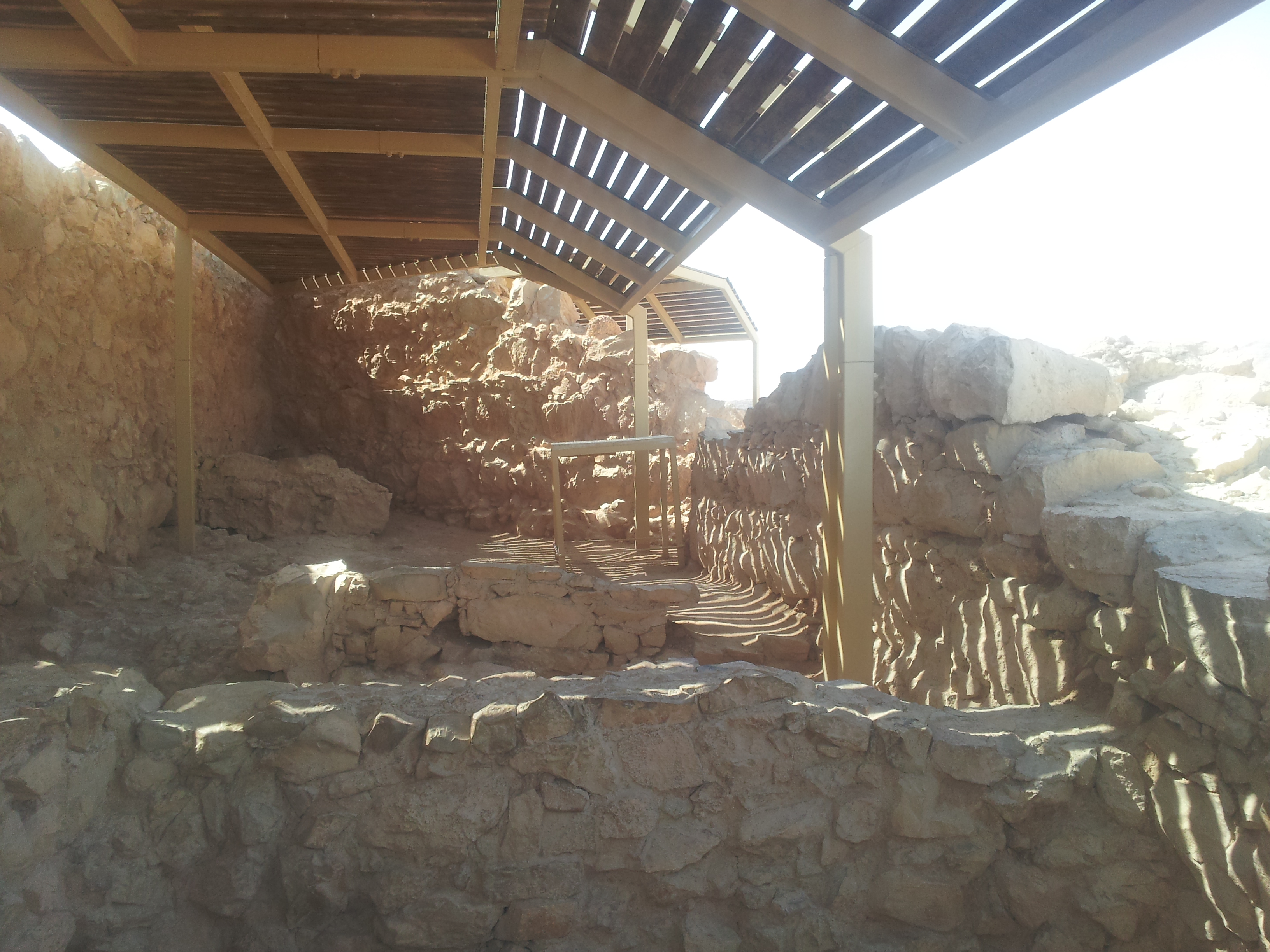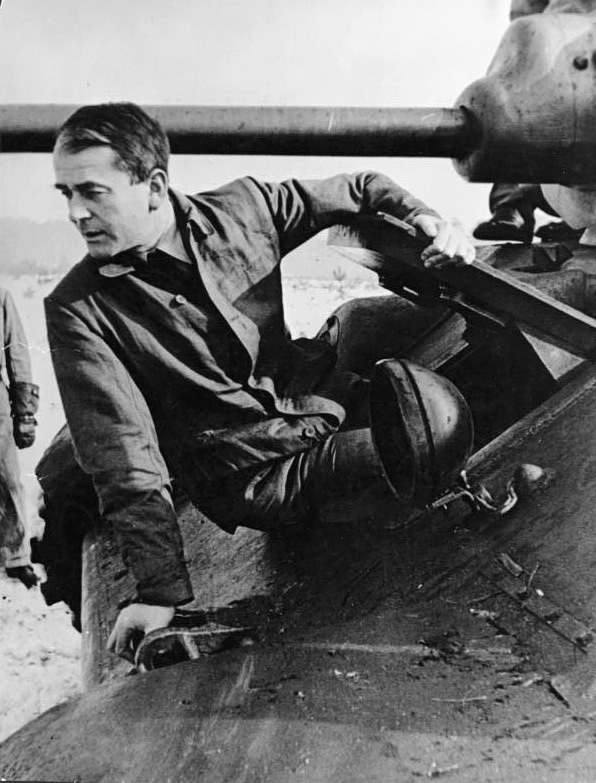|
Jagdtiger
The ''Jagdtiger'' ("Hunting Tiger"; officially designated ''Panzerjäger Tiger Ausf. B'') is a German casemate-type heavy tank destroyer (''Jagdpanzer'') of World War II. It was built upon the slightly lengthened chassis of a Tiger II. Its ordnance inventory designation was Sd.Kfz. 186. The 71-tonne ''Jagdtiger'' was the heaviest armored fighting vehicle (AFV) used operationally by any nation in WWII and the heaviest combat vehicle of any type to be produced during the conflict. it was armed with a 128 mm Pak 44 L/55 main gun which could out-range and defeat any AFV fielded by the Allied forces. It saw brief service in small numbers from late 1944 until the end of the war on both the Western and Eastern Front. Although 150 were ordered, only around 80 were produced. Due to an excessive weight and an underpowered drivetrain system, the ''Jagdtiger'' was plagued with mobility and mechanical problems. Three ''Jagdtigers'' survive in museums. Development With the success of t ... [...More Info...] [...Related Items...] OR: [Wikipedia] [Google] [Baidu] |
Tank Destroyer
A tank destroyer, tank hunter, tank killer, or self-propelled anti-tank gun is a type of armoured fighting vehicle, armed with a direct fire artillery gun or missile launcher, designed specifically to engage and destroy enemy tanks, often with limited operational capacities. While tanks are designed for front-line combat, combining operational mobility and tactical offensive and defensive capabilities and performing all primary tasks of the armoured troops, the tank destroyer is specifically designed to take on enemy tanks and other armoured fighting vehicles. Many are based on a tracked tank chassis, while others are wheeled. Since World War II, gun-armed powerful tank destroyers have fallen out of favor as armies have favored multirole main battle tanks. However, lightly armoured anti-tank guided missile (ATGM) carriers are commonly used for supplementary long-range anti-tank work. The resurgence of expeditionary warfare in the first two decades of the 21st century has s ... [...More Info...] [...Related Items...] OR: [Wikipedia] [Google] [Baidu] |
Tiger II
The Tiger II is a German heavy tank of the Second World War. The final official German designation was ''Panzerkampfwagen'' Tiger ''Ausf''. B,'' Panzerkampfwagen'' – abbr: ''Pz.'' or ''Pz.Kfw.'' (English: "armoured fighting vehicle"), ''Ausf.'' is abbreviation of ''Ausführung'' (English: variant). The full titles ''Panzerkampfwagen'' Tiger ''Ausf''. B and ''Panzerbefehlswagen'' Tiger ''Ausf''. B (for the command version) were used in training and maintenance manuals and in organisation and equipment tables. (Jentz and Doyle 1997). Also sometimes referred to as "Pz. VI ''Ausf'' B", not to be confused with "Pz. VI ''Ausf'' E”, which was the Tiger I. often shortened to Tiger B.Jentz and Doyle 1993, p. 16. The ordnance inventory designation was ''Sd.Kfz.'' 182. ( ''Sd.Kfz.'' 267 and 268 for command vehicles). It was known as King Tiger by Allied soldiers, and is also known under the informal name ''Königstiger'' (the German name for the Bengal tiger which translates literally a ... [...More Info...] [...Related Items...] OR: [Wikipedia] [Google] [Baidu] |
Casemate
A casemate is a fortified gun emplacement or armored structure from which artillery, guns are fired, in a fortification, warship, or armoured fighting vehicle.Webster's New Collegiate Dictionary When referring to Ancient history, antiquity, the term "casemate wall" means a double city wall with the space between the walls separated into chambers, which could be filled up to better withstand battering rams in case of siege (see #Antiquity: casemate wall, Antiquity: casemate wall). In its original early modern meaning, the term referred to a vaulted chamber in a fort, which may have been used for storage, accommodation, or artillery which could fire through an opening or embrasure. Although the outward faces of brick or masonry casemates proved vulnerable to advances in artillery performance, the invention of reinforced concrete allowed newer designs to be produced well into the 20th century. With the introduction of ironclad warships, the definition was widened to include a prot ... [...More Info...] [...Related Items...] OR: [Wikipedia] [Google] [Baidu] |
Casemate
A casemate is a fortified gun emplacement or armored structure from which artillery, guns are fired, in a fortification, warship, or armoured fighting vehicle.Webster's New Collegiate Dictionary When referring to Ancient history, antiquity, the term "casemate wall" means a double city wall with the space between the walls separated into chambers, which could be filled up to better withstand battering rams in case of siege (see #Antiquity: casemate wall, Antiquity: casemate wall). In its original early modern meaning, the term referred to a vaulted chamber in a fort, which may have been used for storage, accommodation, or artillery which could fire through an opening or embrasure. Although the outward faces of brick or masonry casemates proved vulnerable to advances in artillery performance, the invention of reinforced concrete allowed newer designs to be produced well into the 20th century. With the introduction of ironclad warships, the definition was widened to include a prot ... [...More Info...] [...Related Items...] OR: [Wikipedia] [Google] [Baidu] |
Armored Fighting Vehicle
An armoured fighting vehicle (AFV) is an armed combat vehicle protected by armour, generally combining operational mobility with offensive and defensive capabilities. AFVs can be wheeled or tracked. Examples of AFVs are tanks, armoured cars, assault guns, self-propelled guns, infantry fighting vehicles, and armoured personnel carriers. Armoured fighting vehicles are classified according to their characteristics and intended role on the battlefield. The classifications are not absolute; two countries may classify the same vehicle differently, and the criteria change over time. For example, relatively lightly armed armoured personnel carriers were largely superseded by infantry fighting vehicles with much heavier armament in a similar role. Successful designs are often adapted to a wide variety of applications. For example, the MOWAG Piranha, originally designed as an APC, has been adapted to fill numerous roles such as a mortar carrier, infantry fighting vehicle, and assaul ... [...More Info...] [...Related Items...] OR: [Wikipedia] [Google] [Baidu] |
Maybach HL230
The Maybach HL230 was a water-cooled 60° 23 litre V12 petrol engine designed by Maybach. It was used during World War II in heavy German tanks, namely the Panther, Jagdpanther, Tiger II, Jagdtiger (HL230 P30), and later versions of the Tiger I and Sturmtiger (HL230 P45). Description The engine was an upgraded version of the slightly smaller HL210 engine which was used to equip the first 250 Tiger I tanks built, and unlike the HL230 had an aluminium crankcase and block. The HL210 engine had a displacement of or 1,779 cm³ per cylinder; bore , stroke . The HL230 engine bore was increased from 125 mm to 130 mm. It had a displacement of or 1.925 cm³ per cylinder; bore , stroke . The maximum output of 700 PS (690 hp, 515 kW) at 3,000 rpm. Maximum torque is 1850 Nm (1364.5 ft lbs) at 2,100 rpm. Typical output was 600 PS (592 hp, 441 kW) at 2,500 rpm. The crankcase and block were made of grey cast iron and the cylinder h ... [...More Info...] [...Related Items...] OR: [Wikipedia] [Google] [Baidu] |
Jagdpanzer
''Jagdpanzer'' (JgPz) is the name given in German to a heavily-armoured, tracked tank destroyer, although it may also be used for other kinds of self-propelled guns. Literally translated from German, ''Jagdpanzer'' is "hunting tank". It typically refers to anti-tank variants of existing tank chassis with a well-armoured casemate fixed superstructure, mounting an anti-tank gun with limited traverse in the front, and classed by the western Allies of World War II as a tank destroyer. History The ''Jagdpanzer'' designs followed on from the more lightly armoured ''Panzerjäger'' ("tank hunter") designs, which took an anti-tank gun and mounted it on top of a tank chassis with supplementary armour fitted around the gun crew. However, the armour had an open rear and top, almost never providing the crew with full protection from the elements. In addition, much experience was gained from the Sturmgeschütz series of assault guns for infantry support, which already used heavily armour ... [...More Info...] [...Related Items...] OR: [Wikipedia] [Google] [Baidu] |
Panzerjäger
''Panzerjäger'' (German language, German "armour-hunters" or "tank-hunters", abbreviated to ''Pz.Jg.'' in German) was a branch of service of the Nazi Germany, German Wehrmacht during the World War II, Second World War. It was an Anti-tank warfare, anti-tank arm-of-service that operated Self-propelled artillery, self-propelled anti-tank artillery, also named ''Panzerjäger''. Soldiers assigned to tank hunting units wore ordinary Feldgrau, field-gray uniforms rather than the black of the Panzer troops, while ''Panzerjäger'' vehicle crews wore the Panzer jacket in field gray. Development From 1940, the ''Panzerjäger'' troops were equipped with vehicles produced by mounting an existing anti-tank gun complete with the gun shield on a tracked chassis to allow higher mobility. The development of ''Panzerjägers'' into the fully protected ''Jagdpanzer'' armored vehicle designs began before the war with the ''Sturmgeschütz''-designated armored Self-propelled artillery, artillery ve ... [...More Info...] [...Related Items...] OR: [Wikipedia] [Google] [Baidu] |
Tiger I
The Tiger I () was a German heavy tank of World War II that operated beginning in 1942 in Africa and in the Soviet Union, usually in independent heavy tank battalions. It gave the German Army its first armoured fighting vehicle that mounted the 8.8 cm KwK 36 gun (derived from the 8.8 cm Flak 36). 1,347 were built between August 1942 and August 1944. After August 1944, production of the Tiger I was phased out in favour of the Tiger II. While the Tiger I has been called an outstanding design for its time, it has also been called overengineered, using expensive materials and labour-intensive production methods. In the early period Tiger was prone to certain types of track failures and breakdowns and was in general limited in range by its high fuel consumption. It was expensive to maintain, but generally mechanically reliable. It was difficult to transport and vulnerable to immobilisation when mud, ice, and snow froze between its overlapping and interleaved ''Schacht ... [...More Info...] [...Related Items...] OR: [Wikipedia] [Google] [Baidu] |
Gun Turret
A gun turret (or simply turret) is a mounting platform from which weapons can be fired that affords protection, visibility and ability to turn and aim. A modern gun turret is generally a rotatable weapon mount that houses the crew or mechanism of a projectile-firing weapon and at the same time lets the weapon be aimed and fired in some degree of azimuth and elevation (cone of fire). Description Rotating gun turrets protect the weapon and its crew as they rotate. When this meaning of the word "turret" started being used at the beginning of the 1860s, turrets were normally cylindrical. Barbettes were an alternative to turrets; with a barbette the protection was fixed, and the weapon and crew were on a rotating platform inside the barbette. In the 1890s, armoured hoods (also known as "gun houses") were added to barbettes; these rotated with the platform (hence the term "hooded barbette"). By the early 20th Century, these hoods were known as turrets. Modern warships have gu ... [...More Info...] [...Related Items...] OR: [Wikipedia] [Google] [Baidu] |
P26 Jagdtiger Woodenmodel
P, or p, is the sixteenth letter of the Latin alphabet, used in the modern English alphabet, the alphabets of other western European languages and others worldwide. Its name in English is ''pee'' (pronounced ), plural ''pees''. History The Semitic Pê (mouth), as well as the Greek Π or π ( Pi), and the Etruscan and Latin letters that developed from the former alphabet, all symbolized , a voiceless bilabial plosive. Use in writing systems In English orthography and most other European languages, represents the sound . A common digraph in English is , which represents the sound , and can be used to transliterate ''phi'' in loanwords from Greek. In German, the digraph is common, representing a labial affricate . Most English words beginning with are of foreign origin, primarily French, Latin and Greek; these languages preserve Proto-Indo-European initial *p. Native English cognates of such words often start with , since English is a Germanic language and thus has ... [...More Info...] [...Related Items...] OR: [Wikipedia] [Google] [Baidu] |
Panther Tank
The Panther tank, officially ''Panzerkampfwagen V Panther'' (abbreviated PzKpfw V) with ordnance inventory designation: ''Sd.Kfz.'' 171, is a German medium tank of World War II. It was used on the Eastern and Western Fronts from mid-1943 to the end of the war in May 1945. On 27 February 1944 it was redesignated to just ''PzKpfw Panther'', as Hitler ordered that the Roman numeral "V" be deleted. In contemporary English-language reports it is sometimes referred to as the "Mark V". The Panther was intended to counter the Soviet T-34 medium tank and to replace the Panzer III and Panzer IV. Nevertheless, it served alongside the Panzer IV and the heavier Tiger I until the end of the war. It had excellent firepower, protection and mobility, although its reliability was less impressive. The Panther was a compromise. While having essentially the same Maybach V12 petrol (690 hp) engine as the Tiger I, it had better gun penetration, was lighter and faster, and could traverse roug ... [...More Info...] [...Related Items...] OR: [Wikipedia] [Google] [Baidu] |






.jpg)

